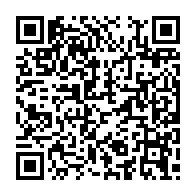Asosiy menyu
Izlash
Eng ko'p ko'rilgan resurslar
TIZIMGA KIRISH
Xozir saytda
 Ra`no Suleymanova Do`sbekovna 01.08.2021-20:11:15
Ra`no Suleymanova Do`sbekovna 01.08.2021-20:11:15 Maqola → Maqola
|
The word innovation has long entered the lexicon of modern man. Innovation is something ТnewУ, ТprogressУ. Innovation also takes place in teaching practice, as it is an important part of the creative process. There is an opinion that new educational technologies that are used in the educational process have provoked the emergence of a new type of lesson - innovative. There is some truth in this, but the transformation that has taken place in the education system in recent years has become a more significant condition for the emergence of such lessons. One of the main factors of productive development of society is education. Changes are constantly taking place in the educational space, and new requirements are being put forward for the quality of education. At this stage of social development in Uzbekistan, the content of education is also being modernized. These changes are closely related to the introduction of new technologies in the teaching of foreign languages. Now the question of how to use innovative technologies in educational institutions is being raised more and more often. Innovative technologies are not only technical means, but also new models of education, new methods and approaches to education. Technologies are introduced into the educational process as a result of improving both the content and methods of teaching foreign languages. The main task of teaching a foreign language is to form a culture of communication among children, that is, practical language acquisition is in the first place.In this situation, the mentor needs to create conditions in which the student will master the knowledge with practical application. The student should be given the opportunity to express themselves, to be active and creative [2, p. 80-87]. Demyankov V.Z., Cooper D., Katz J. and Chomsky N. studied the problems of language acquisition. They, as well as a number of other scientists, including I.V. Pasov, V.F. Shatalov, S.N. Lysenkova, E.S. Mejenko, and others. The structure of language ability refers to a strategic competence that is of considerable interest to linguists and has different interpretations and approaches. The purpose of this article is to analyze some existing points of view on the theoretical justification and description of the technology of teaching in cooperation in the context of the formation of strategic competence among students in a higher education institution. Mastering a foreign language communicative competence is one of the most important tasks of a foreign language teacher, which is quite difficult to solve. Students often find it difficult to understand the vast amount of material taught in schools, as the amount of information they learn, both in and out of school, increases every day. One of the most effective ways to develop communicative competence in modern educational |
 Ko'chirildi: 131 Ko'chirildi: 131
|
0
|
 |
|

 Ko'chirish:
Ko'chirish: 